I’m Oleg, a founding chairman of Sunflower Scotland: a Scottish charity which helps Ukraine’s frontline villages. And, from July 2022 to March 2023, I descended down the circles of humanitarian hell. This is the unpolished truth about humanitarian work in the war zone.
Why we should help those who suffer the most?
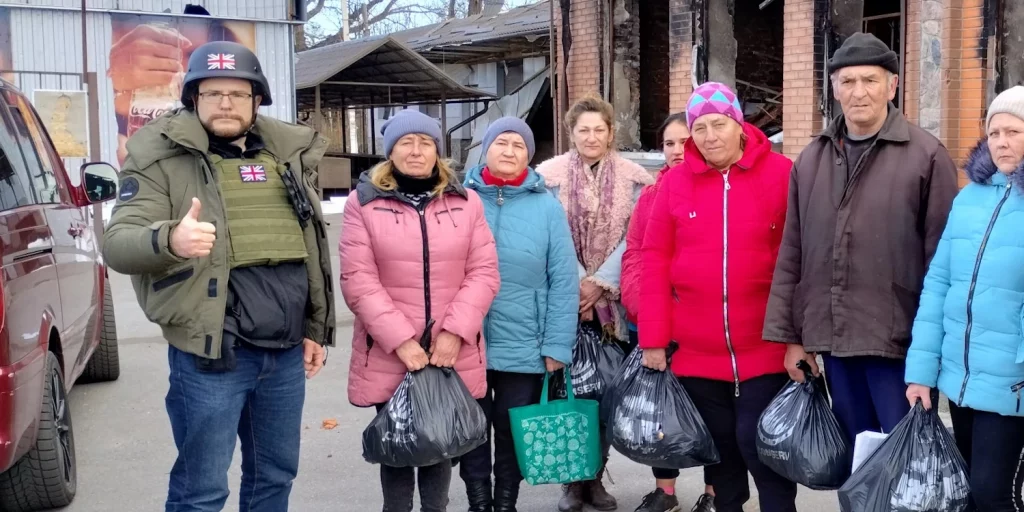
Having started with sending aid to Lviv in March 2022, over time Sunflower Scotland moved our focus closer and closer to the front line.
Why? With each next step, I peeled off a new horrific layer of the humanitarian catastrophe in Ukraine.
On behalf of Sunflower Scotland, I handed out food bags in towns and villages near Kharkiv, Vovchansk, Kupyansk, Izium, Slovyansk, and Chasiv Yar. The eighth pit of hell is the towns and villages stretching along the front line.
This is where field artillery can annihilate you.
There, the most desperate people continue to live in their worst nightmare.
Our team at Sunflower Scotland learned a few painful lessons, and we want to share them with other charities. We are not afraid to share them with the general public, too.
We made many mistakes but we also helped thousands of people in Ukraine and made some fantastic friends.
Part 1. Descending into the eighth pit of hell
Learning the humanitarian situation
In July 2022, five months after Russia began its horrific invasion of Ukraine, I arrived in Kharkiv. I wanted to see what aid Ukraine needed.
Back in Edinburgh, from March to July we were frantically fundraising and loading 20-tonne lorries with humanitarian aid for Ukraine. By July, we sent ten lorries. Ukraine’s charities were very welcoming and were accepting everything we sent. But we didn’t know for sure what was really required. Most importantly, we didn’t know which communities were suffering the most.
So I went to Ukraine’s eastern front to learn.
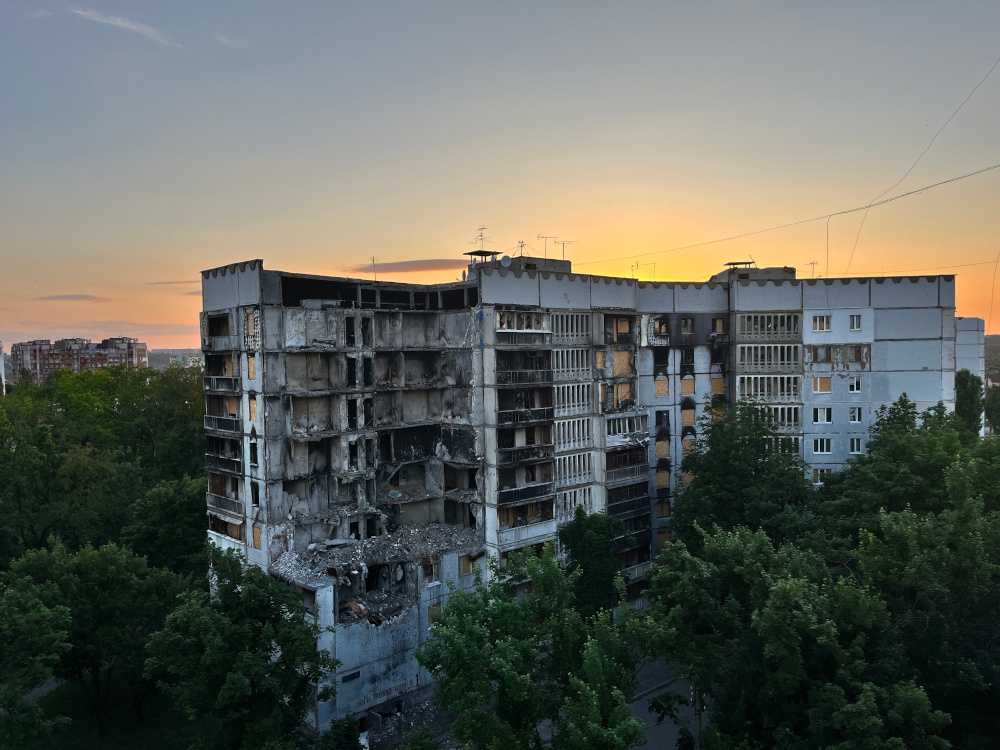
Russia’s first attempt to enter Kharkiv failed. The invaders half-encircled the city from north-west to south-east, and switched to shelling it from about 20 km away.
If you saw photos of London during the Blitz, Kharkiv looked very similar. But it wasn’t a history textbook. Rather, it was happening in real time.
On the 17th August, I woke up when a nearby factory dormitory – with people sleeping inside – was obliterated by a Russian missile.
For some reason the Russian army’s shelling was most severe after dark. When bombs started falling, I would wake up and sit on a chair in the corridor, listening to the low-pitch “booms”. The tribal knowledge was that it’s safer to hide behind two walls. But most Ukrainians, after months of hiding in basements, adopted another mindset: “if it happens, it happens”. They accepted the new reality and continued living.
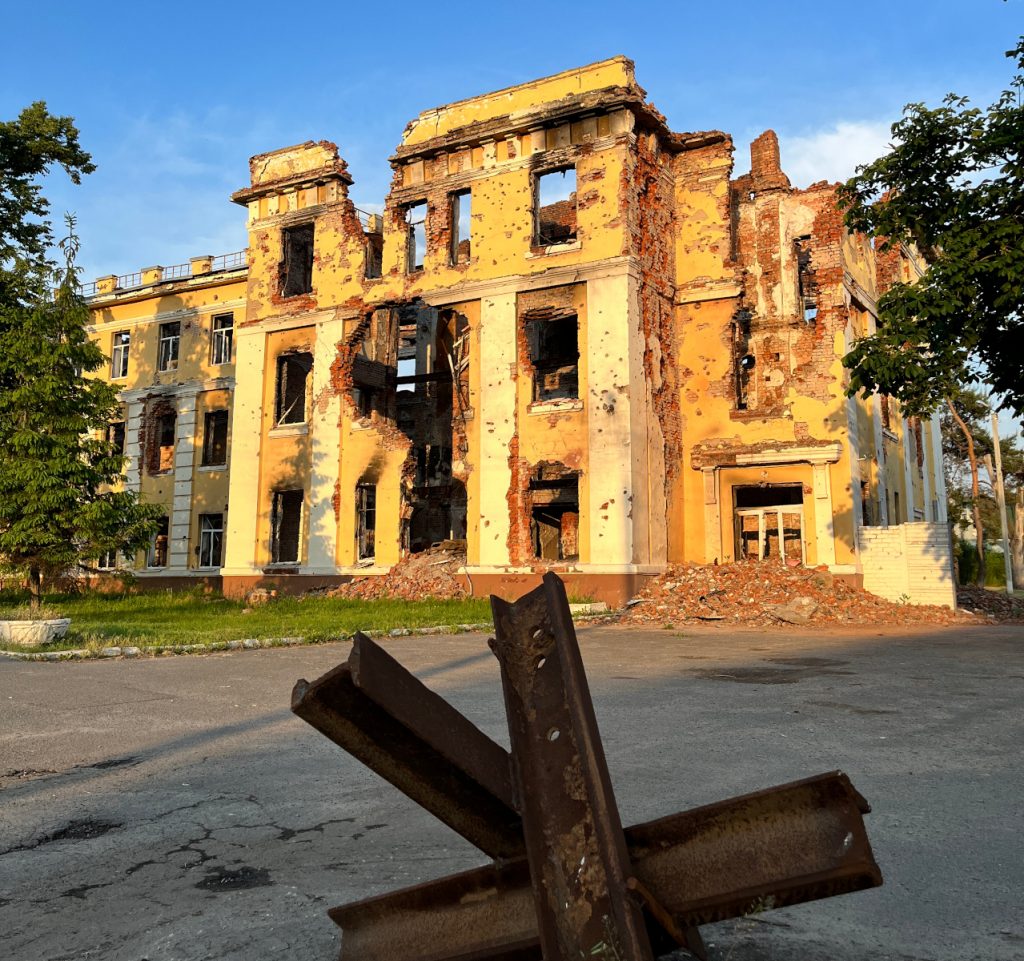
Many buildings had holes from blasts.
I could look inside some of them and see rubble with an odd bookshelf, a table, wallpaper on the walls. It was a nauseating realisation: I knew what happened to families inside when the missiles hit.
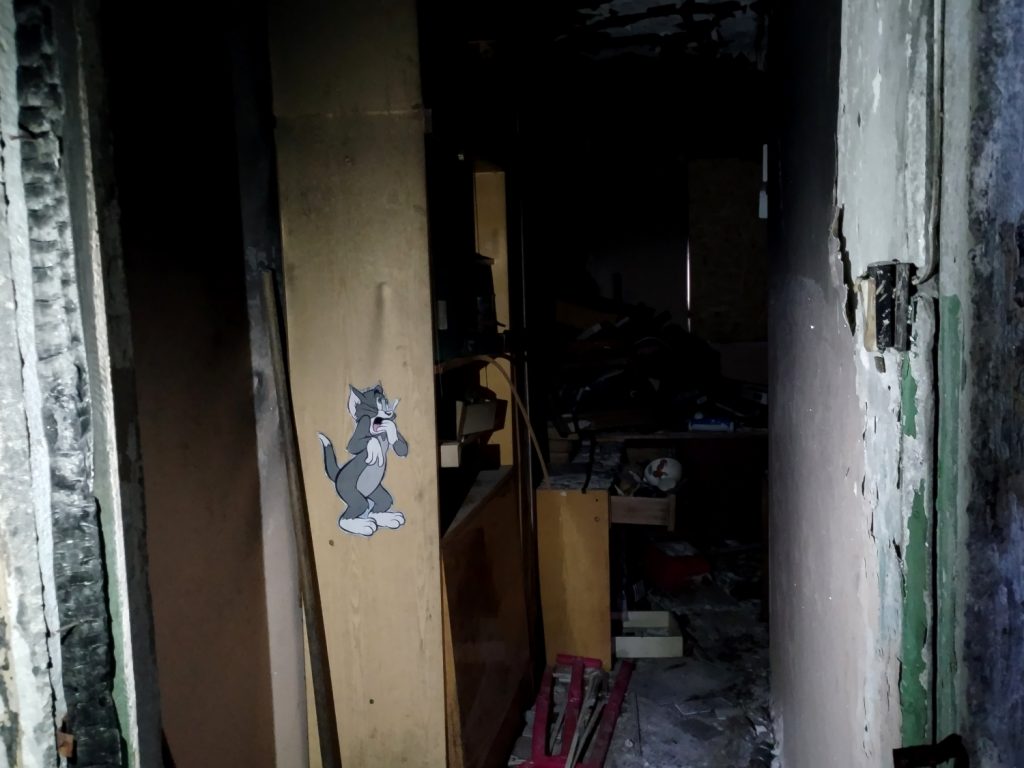
It wasn’t just one scene. Traces of death were everywhere.
In the middle of Kharkiv’s central square stood a Russian missile, which failed to detonate. The warhead pierced the ground with its tail looking into the sky.
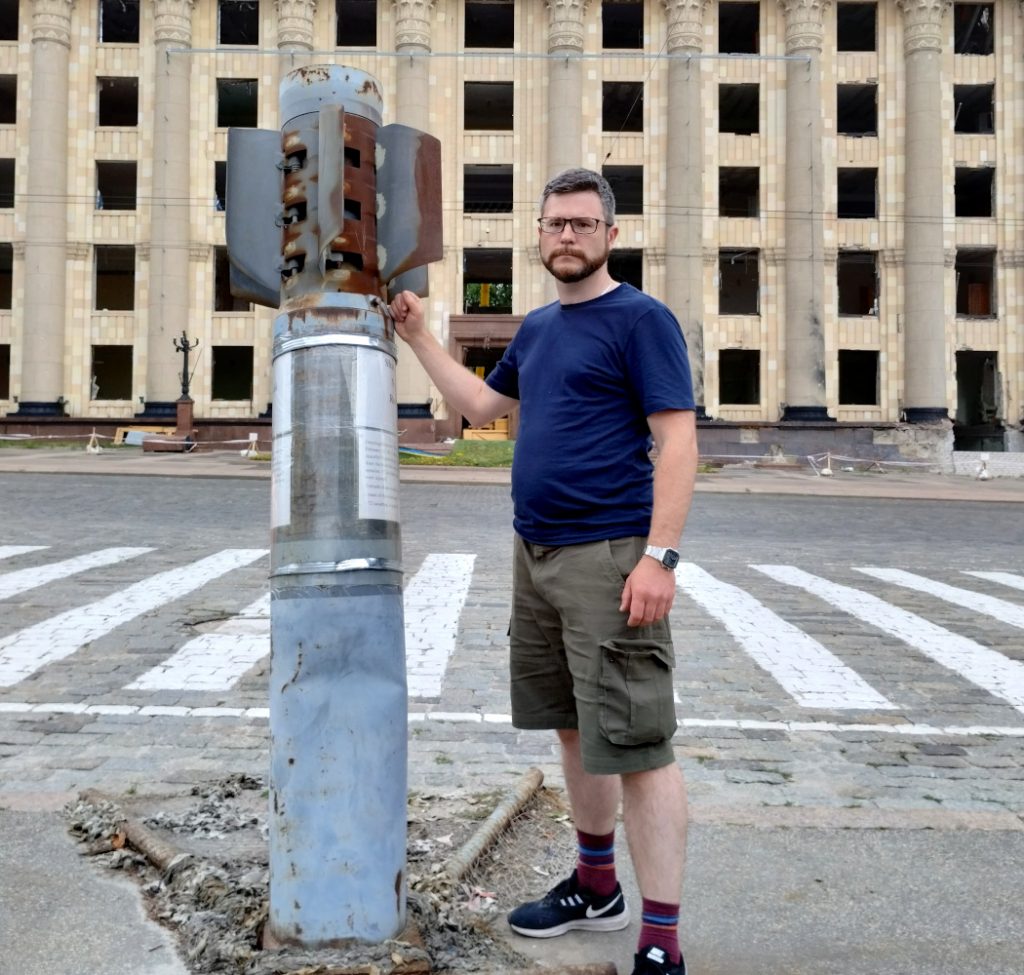
In summer 2022, Kharkiv’s streets felt deserted. Windows smashed and covered with chipboard panels. But it was an illusion. People carried on. The motto of the city was “Kharkiv zhive e pratsue”: Kharkiv lives and works.
Hospital wards were full.
I delivered medical supplies – donated by our friends from England and Scotland – to a children’s trauma hospital in Saltyvka, the children’s cancer hospital, and Kharkiv regional hospital.
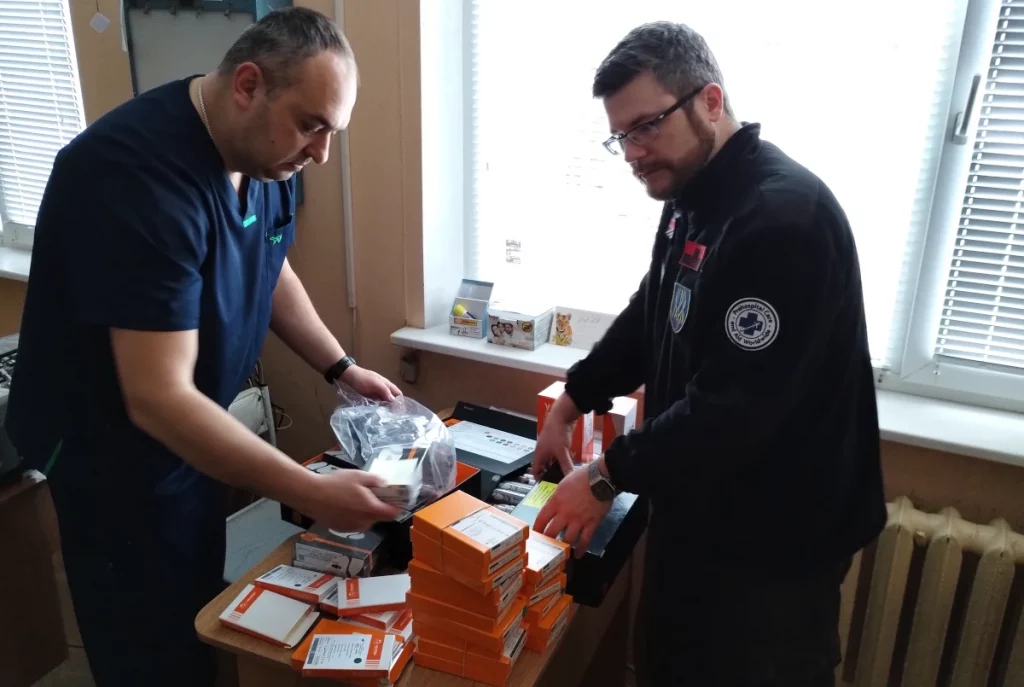
Doctors kept receiving patients, and new mothers kept bringing babies into this world. Much fewer babies than normal, but still: in this nightmare of death, with missiles killing people every day, life slowed down but it didn’t stop.
That summer, I learned a terrifying lesson. When one approached 20-30 km to the front line, they entered another world.
Where the dreadful nightmare was going on every day and night, without pause. Worse than you see in horror movies.
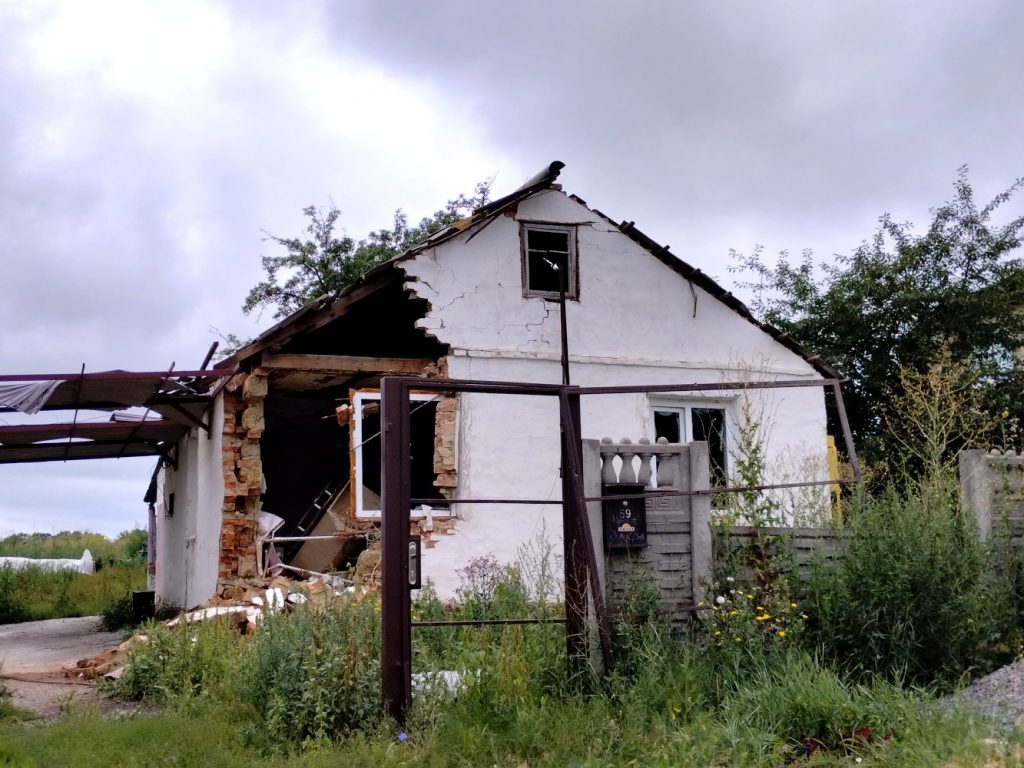
And many people were stranded there.
Our first front line aid deliveries
Together with my friend Mac, we drove a truck with humanitarian aid all the way to the front line in Ukraine from Edinburgh.
We stayed in a rented flat in Kharkiv, made an early start, and delivered aid to Chuhuiv – a small town 20 km south-east of Kharkiv.
Chuhuiv was deserted. It was still early, and shelling hadn’t yet started. People came up from a school basement, where they were hiding. Everyone was nervous, because in those days Chuhuiv was being bombed daily.
We gave out our food bags, took a quick photo, and set off again.
We brought 100 bags filled with Scottish food to Malynivka – a village about 3km away from the front line, on the other side of the Siverskiy Donets river.
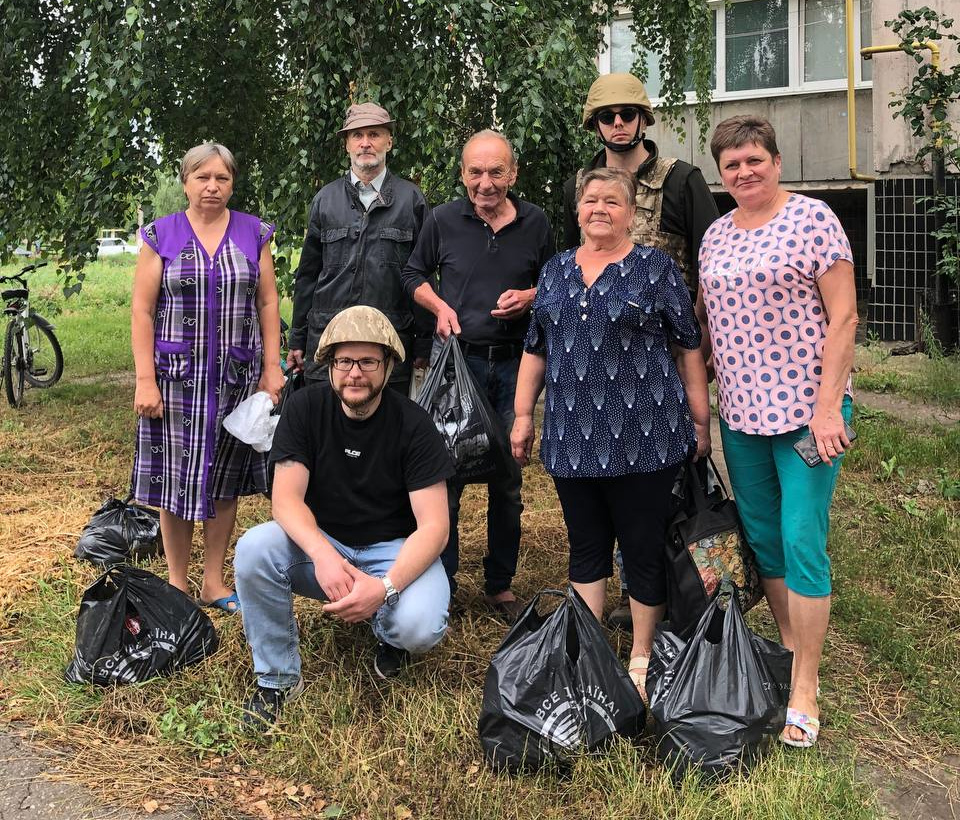
People – mostly elderly – queued up. The talking was quiet. Some cried.
One man, already drunk early in the morning, was telling everyone how he was a war hero, and asking for food or a cigarette.
This is when I saw the heartbreaking truth. That for those desperate residents it was more important not to get food, but rather to know that someone came all the way from Scotland to help them.
That they mattered, that they weren’t forgotten.
Later, we brought aid to Kutuzivka, a village 5km east of Kharkiv. It was occupied by the Russian army between February and April. The Ukrainians pushed the invaders out only by a few miles, and all summer the village was being shelled.
The local residents had been living in a basement, which consisted of a few connected rooms. There was a small kitchen with a gas stove. It was always dark and damp. 107 beds were lined up by the walls.
By late summer, around 80 residents escaped to friends and relatives in safer parts of Ukraine. They had someone to go to, and the money for the journey. We walked down into the basement, and met with those who remained. They had nowhere else to go to.
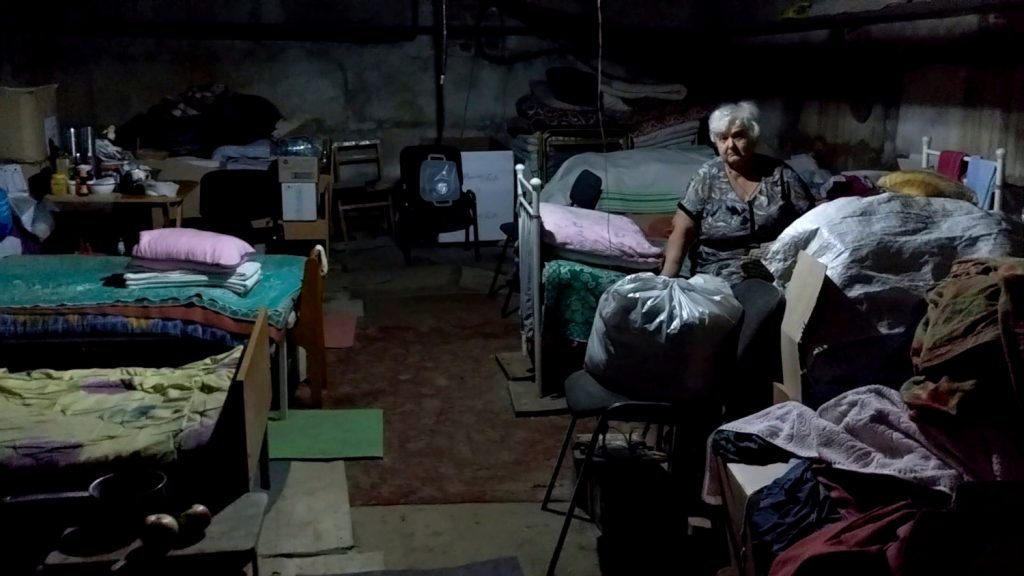
An old lady, with a sad face, sat on a bed, not moving, not talking. Others got excited when we brought food, and a Scottish flag. They cracked jokes, and we enjoyed a few happy moments together.
The space above was crammed with burnt cars and trucks with the rough contour of the letter “Z”: the insignia of the Russian invasion force.“Z” is the new swastika, to those who know it signifies absolute evil.
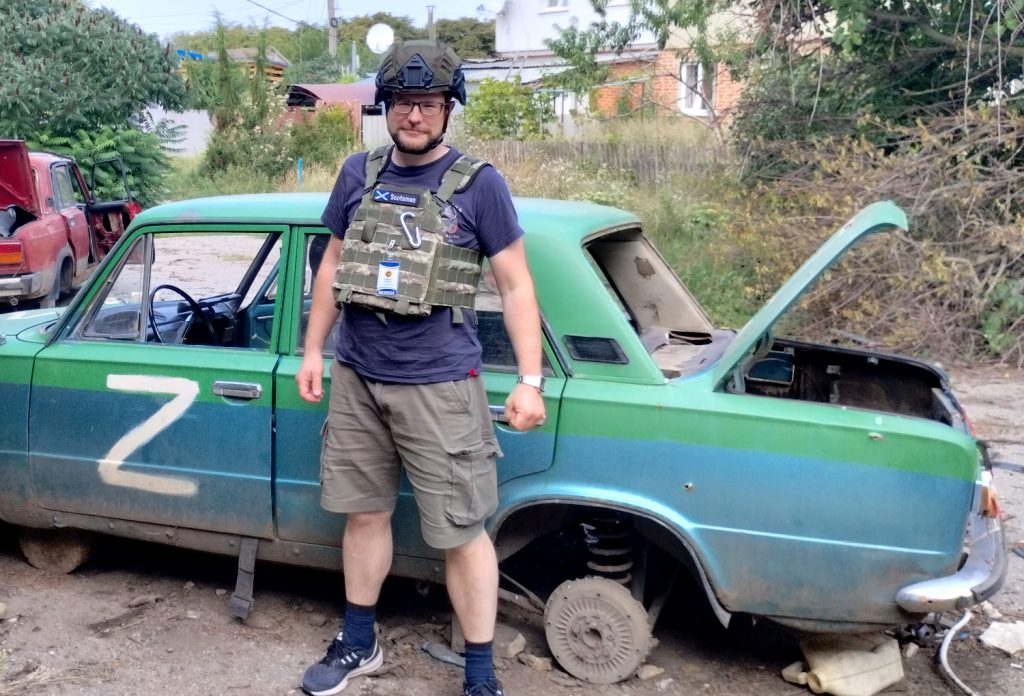
In Mala Rogan’, carcasses of houses stood with walls and roofs collapsed. The ground littered with AK-47 bullets. It turns out, when a shell hits a house, it does not necessarily start a fire. Rather, the building collapses in on itself.
I couldn’t stop thinking about families who were hiding inside, when tanks shoot at them point blank.
Were they hiding under the beds?
Were they sitting around the table holding hands?
Not delivering bags, but helping people
Villages along the front line were a horrific, post-apocalyptic scene. The eighth pit of hell . The ninth is the front itself.
In the following months, I drove from Kupyansk to Izuim, to Slovyansk, Kramatorsk, Chasiv Yar and Zaporizhzhia.
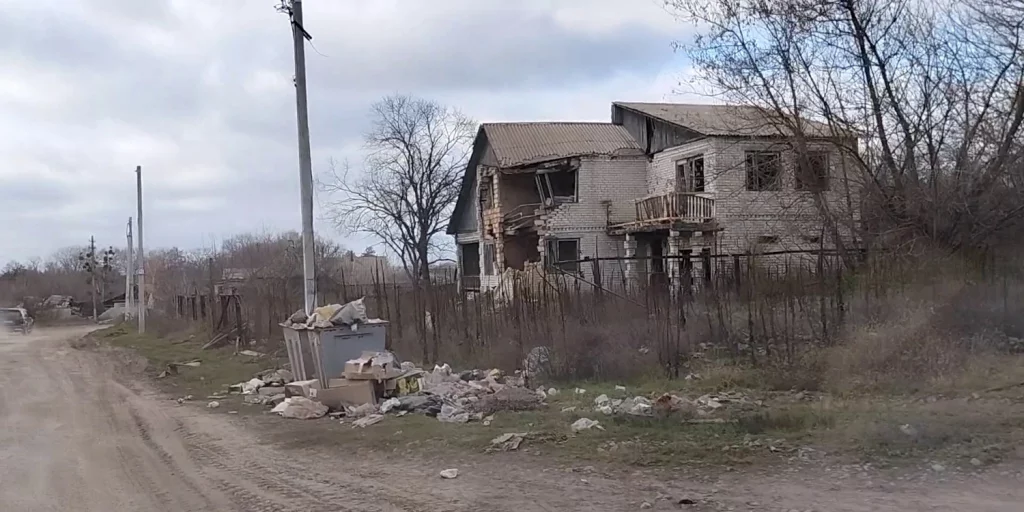
In many places I visited, the landscape was similar: carcasses of buildings. But what shocked me is there were people everywhere. They were kind, nice and very grateful. Always depressed, sometimes very nervous.
Over time, I realised that Sunflower’s mission wasn’t only to bring food bags. It was to hold their hands, to hug them. Many people were genuinely moved when they learned that someone came to them all the way from Edinburgh, Scotland. When I felt this response, I knew our trip wasn’t in vain.
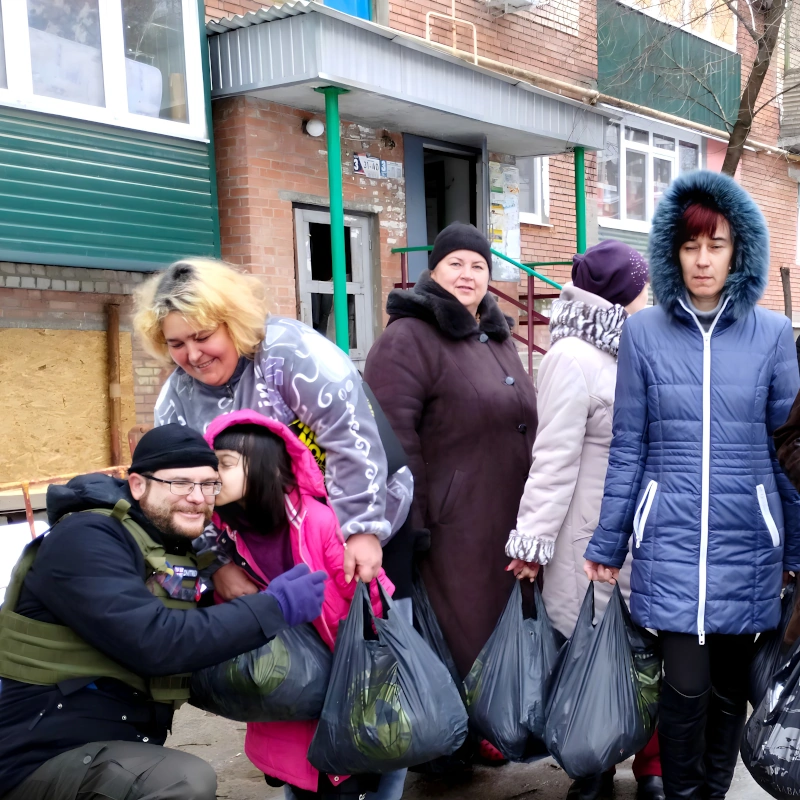
In November, I drove from Kupyansk to Izium, on the eastern side of the Oskil river. Villages down this road were nearly obliterated. And yet, you can see pensioners walking between the ruined homes, like shadows.
Some homes had blue roofs. Apparently, blue polyethylene film was being distributed by the local administration, so that residents could cover bomb holes in the roofs and prepare for the coming winter.
Residents were rebuilding their homes, trying to get their lives back.
The grim reality is that from summer 2023, these villages have been in constant crossfire. Ukrainian soldiers told me that this road doesn’t exist anymore. Most of the homes have been ruined to the ground.
Why they remain
When the war started, some people left their homes. Either because Russian bombs smashed their apartments or houses, or in fear of future occupation.
But many remained, even in awfully dangerous places.
I spoke with people while visiting frontline towns and villages, such as Slovyansk (20 km from the front line), Borova (7 km from the front line) and Kutuzivka (pretty much the frontline itself).
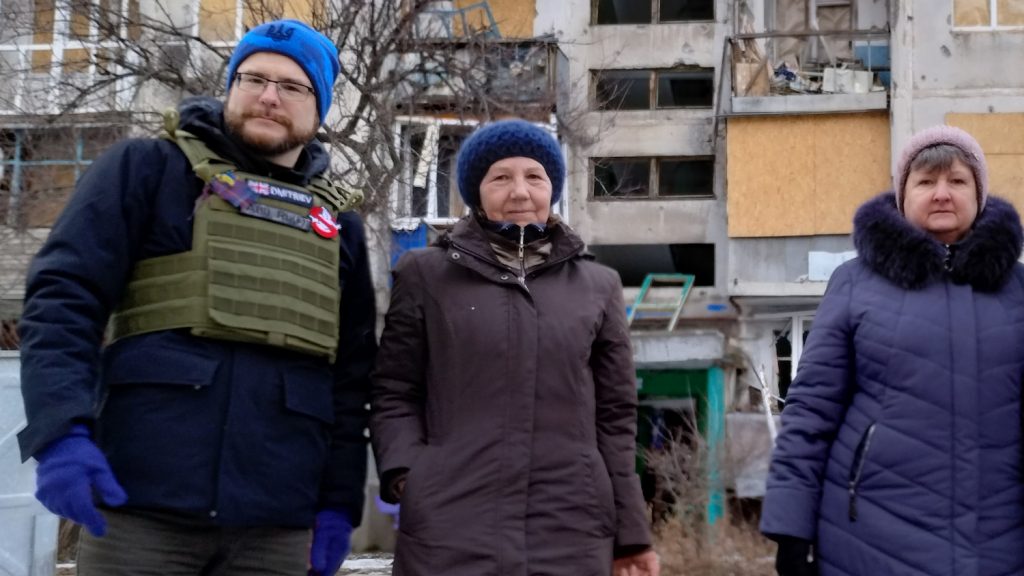
Why did they remain?
In villages, many had chickens, cows or pigs to look after. Others had no relatives in safer areas, and had nowhere to go. Some had no money.
But the response that I heard most often – and that made my blood chill – was “I’ve lived my life, let me die in my home”. Clearly, having lived under the falling bombs for months, people’s mental health has been damaged beyond repair.
Some tried to run away, but in the end they returned. Why?
In November 2022, a lady in Slovyansk made it brutally clear to me. She said their family fled when the war started. But rents in western Ukraine have gone up so much, they just didn’t have the money. Their apartment block sustained a blast, and a few flats on one side were ruined. Flats on the other side were considered OK. So they moved back in.
Older people need help. Especially in villages. They struggled long before the war (the average state pension in Ukraine is only £100 per month), but now their life is simply untenable.
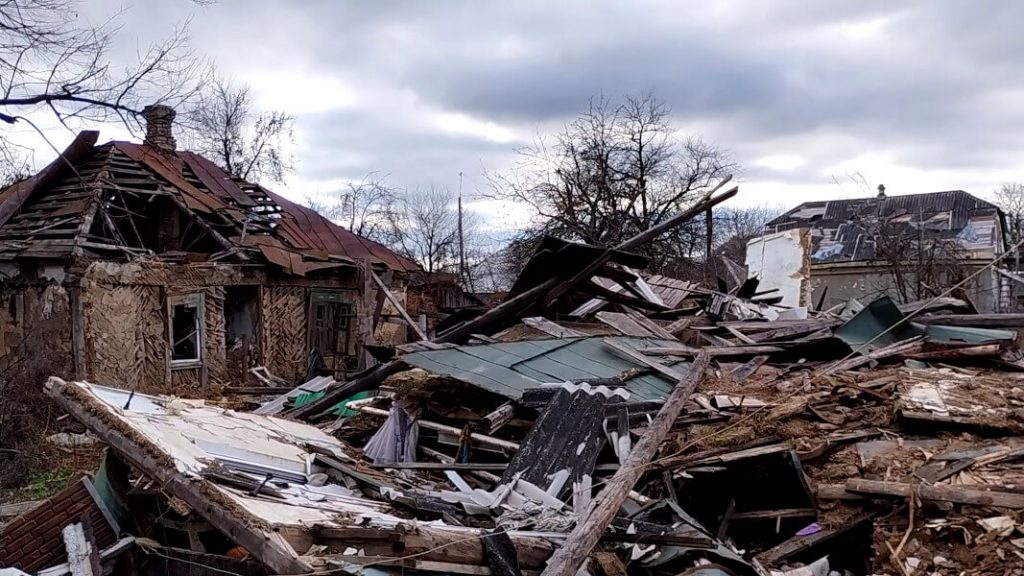
Most of the younger and fitter Ukrainians found jobs in other parts of the country or fled to Europe. Villages are a bleak, heartbreaking landscape of ruined homes, where old ladies somehow survive. The male life expectancy in the rural areas is very short.
Prioritising our resources
In the first months after the start of the invasion, all communities in Scotland made a tremendous effort to help Ukraine. It seemed like everybody wanted to contribute.
Starbucks at Fountainbridge were really kind, hosting our fundraiser in April. Our friends donated enough cash to hire two lorries. Scots from all over the country were responding to Ukraine’s cry for help, and making donations.
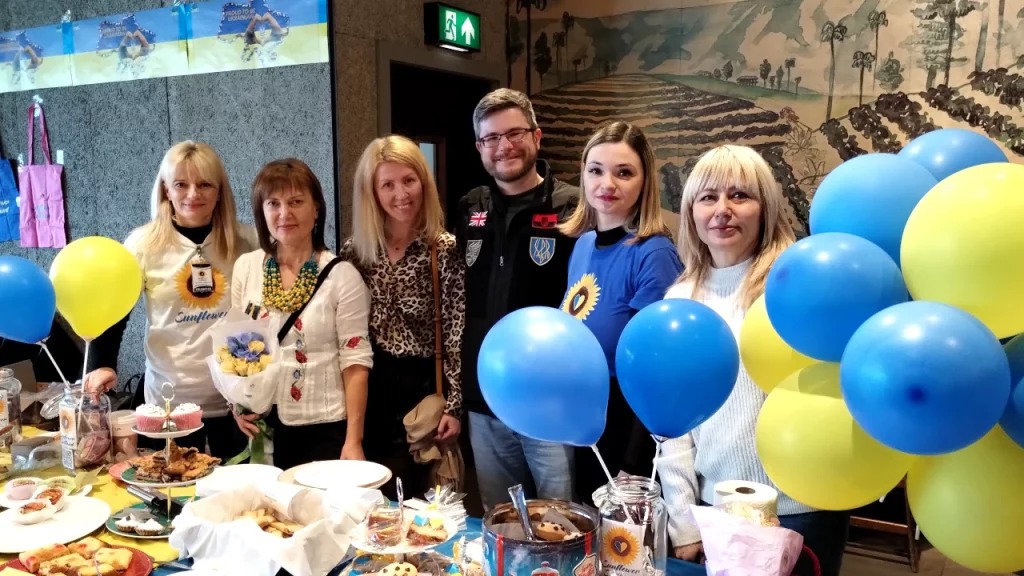
Nairns (https://nairns.com/) – the Edinburgh-based producers of delicious oat biscuits – donated many pallets of cookies and porridge oats.
We delivered them to families hiding in basements in Malynivka and Kutuzivka, to residents of Borova and refugees who fled their homes to Dnipro.
Baynes The Family Bakers (https://baynes.co.uk/) donated six full pallets of top-quality flour, which we delivered to Donets – a large village that provided refuge to many refugees from the occupied Balakliya.
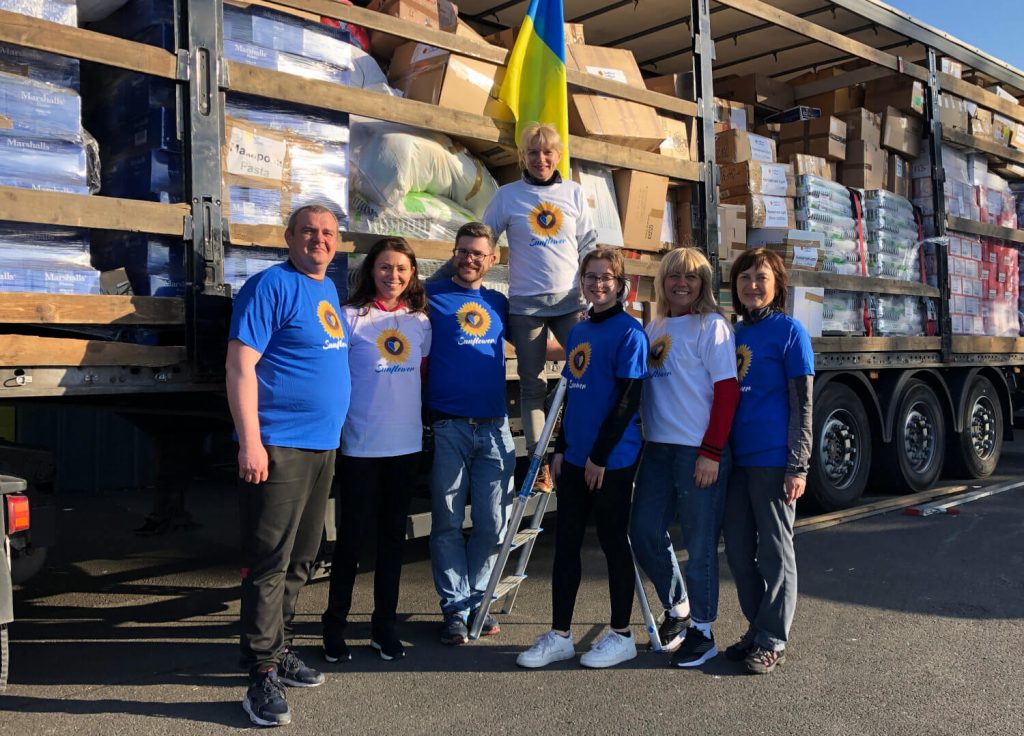
However, by the end of summer, the river of donations dried up to a small stream. We faced a sobering question: do we have enough to help everybody? And if not, how should we prioritise?
It became obvious that we had to deliver aid only to those communities where it would do the most good. Where it’s the difference between life or death.
The need to change
The lorries we were sending to Ukrainian charities in spring-summer 2022 were barely reaching the toughest areas. The aid was being thinly spread across many volunteer cities of western and central Ukraine: Lviv, Kyiv, Dnipro. Only a small part went to frontline areas: Donbas, Zaporizhzhia, Kharkiv.
Why? Because getting there was hard and life-threatening. Only a few really brave men and women volunteered to risk their lives and take aid to the war zone.
When I saw with my own eyes the horror and destruction in the frontline areas, it was a revelation. This is where people barely survived: the eighth pit of hell.
We decided that 100% of our resources should be directed there. We knew that we needed to help those who were suffering the most. But the lorries we were sending from the UK to west Ukraine weren’t reaching those places.
We had to change our operation, and quickly.
The renewed Sunflower
We completely reorganised Sunflower by September 2022. In the year that followed, we conducted 28 aid delivery missions.
We helped over 4,270 people in frontline villages and towns.
We delivered medical aid to five hospitals, and six vehicles to Ukraine’s defenders.
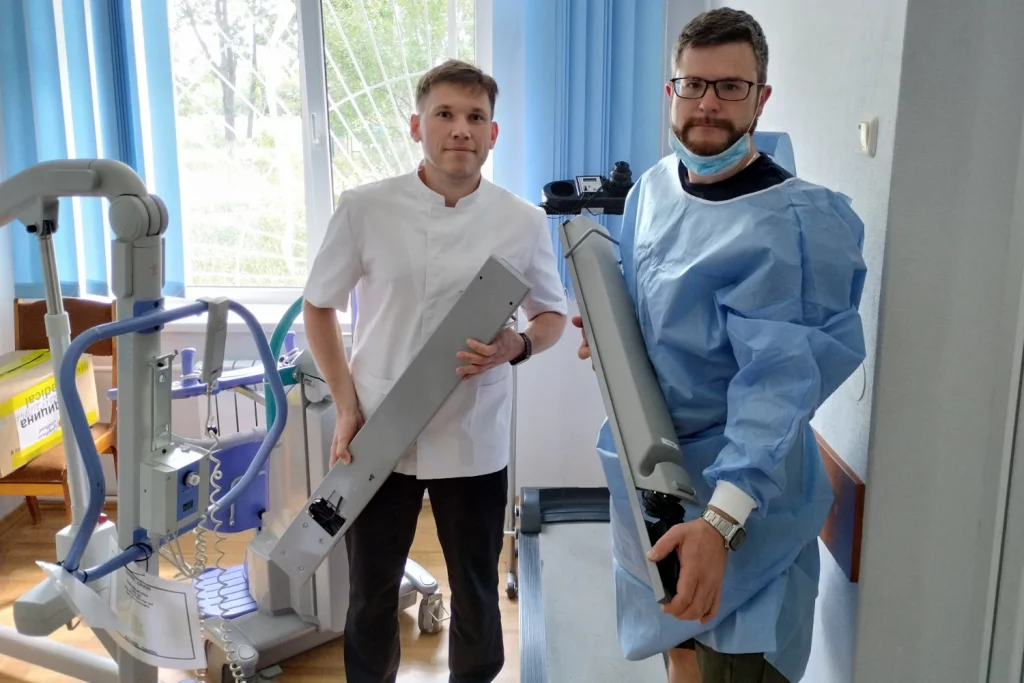
Sunflower’s work changed pretty drastically in order to follow a few key principles:
- First and foremost, we started buying aid locally in Ukraine, in order to support the country’s fragile economy and fight poverty.
- Secondly, we started tracing each aid bag to the end recipient, keeping photographic records.
- Thirdly, in order to be more transparent, we developed a new website. We began publishing reports for all our missions: how much was spent on buying supplies, where we went, and how many people were helped.
Learning the hard way
During our time in Ukraine we learned a lot. We made mistakes. We were even robbed.
Two of our members who travel to Ukraine saw some horrific scenes and came back with PTSD.
One of our volunteers had a heart attack, and another was shell-shocked.
After working back and forth between Edinburgh and Ukraine for months, I was struck by severe nerve pain. It hit me in March, on my fifth tour of Ukraine.
Over-the-counter painkillers stopped working. I ended up losing sensitivity in my limbs. Back in Scotland, the NHS gave me some heavy-duty painkillers.
I had to step down.
Elvira, my wife and a Sunflower’s trustee, picked up the baton. She delivered an ambulance to Tsyrkuny, where it was picked up by frontline medics.
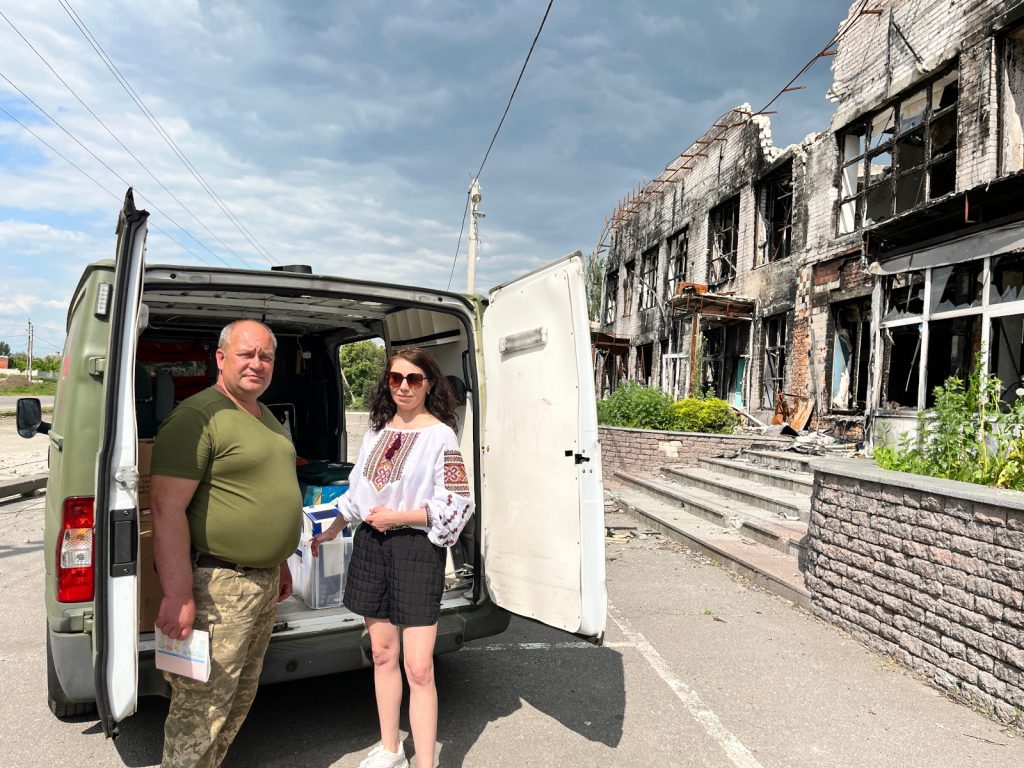
At the time of writing, she is on another mission to Ukraine. She is driving two jeeps loaded with bandages, wheelchairs and other medical supplies destined for the trauma hospital in Saltyvka, Kharkiv, and to frontline medics near Izium.
This is where, according to president Zelenskiy (at the time of writing) the Russians are trying to breach Ukraine’s front. This means there will be many wounded, and medics will need all the help they can get.
Eight months after my injury, I am back to managing Sunflower and organising aid deliveries. We’re operating at full capacity and doing aid deliveries both in the north-east (Kharkiv region) and south (Kherson region).
As you can see, learning how to work in the war zone can be overwhelming. That’s why I want to share this knowledge.
My goal is to give other humanitarians a head start, help them to avoid the same mistakes we made and help more people who really need it.
Part 2. Lessons from a frontline charity
Lesson 1. See the humanitarian crisis with your own eyes. Aid is limited: prioritise who needs help first.
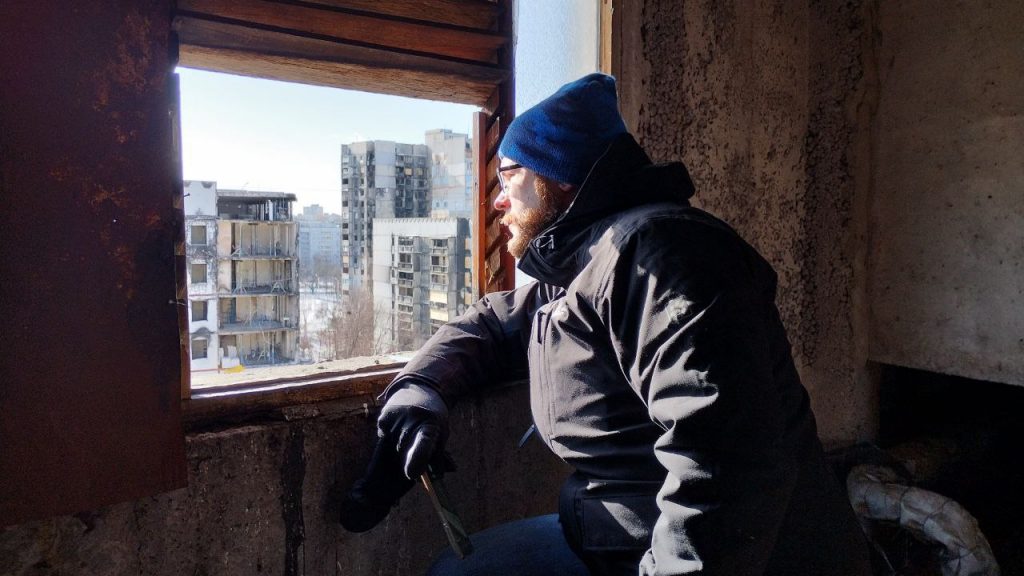
As I explained in the first part of the article, seeing the humanitarian situation with our own eyes drastically changed our humanitarian response.
It’s important to identify those in the worst condition, and start with them. Why? Because our aid isn’t unlimited. In fact, we have very little aid relative to the scale of the disaster.
When we misplace our aid, we don’t have enough for those who suffer the most.
It was hard to understand this from the comfort and safety of Scotland. Only when we started delivering Scottish aid to frontline villages, I realised that we didn’t have enough aid to help those suffering in these war-torn areas.
The first time my heart broke was in Malynivka.
There were more old people in the queue, than we had food bags. We had to close the boot, and say “sorry”.
Borova – just 10 kilometres from the front line – became home to many refugees from the neighbouring villages. We risked our lives getting there only to find that Borova was overcrowded.
We only had 120 bags (about 1 tonne) of food. At first, everyone queued up, and the distribution was going well. But when we had only a few bags left, people saw and rushed to grab the last one.
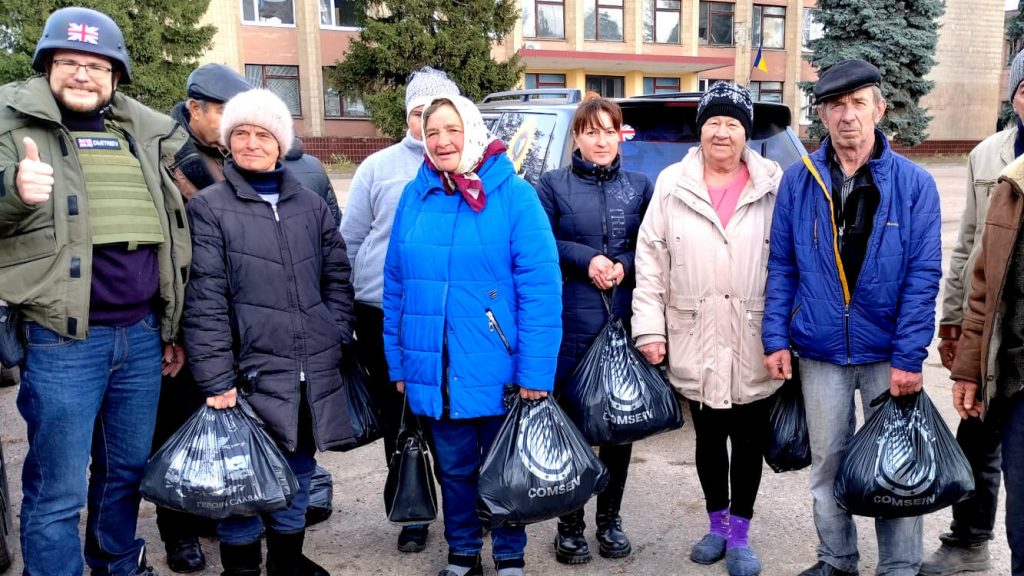
It was a bit messy, but not just that. It was tragic.
The war is like a big tide. There are tens of thousands of people who suffer horrible atrocities. We must do our best to help them. If we don’t, we have failed as humanitarians. That’s why we must spend our resource very carefully.
We should go the extra mile to identify those who should be at the front of the queue and help them first.
Lesson 2. Trace each food bag to the end recipient
In the first part of our journey – when we were sending lorries with aid to a charity in Lviv – we had no traceability. The Lviv charity didn’t produce any reports.
Fair enough. During the first weeks of the war it was chaos everywhere. The Lviv region was flooded with refugees from all over Ukraine, who rushed to escape to Europe. But we foresaw that soon our donors would ask for evidence. In order to continue helping people, we had to organise transparent reporting in place.
In May 2022, we switched our lorries to our new partner: the Dnipro charity. They provided fantastic, very detailed photo reports. The level of traceability was excellent. But, as I explained earlier, they only sent a smaller part of our aid to the front line areas.
In July, we started delivering aid to frontline villages ourselves.
Eventually, we worked out how to record every food distribution and have full traceability. I wrote an Aid Delivery Procedure for our team, which I’d be happy to share. If you want a free copy please contact us.
Before the mission, we bought and packaged all of our aid aid in individual plastic bags. We limit aid bags to about 7 kg, because it’s the maximum weight an old woman should be able to carry.
You’re maybe wondering why did we spend time preparing our aid bags in advance? Why not load pallets of food, take it to a village and pack on the spot?
The reason is that packing takes a lot of time. When delivering to frontline settlements, we had to be quick. Driving in these areas, we had a target on our backs. Or, rather, on our vehicle roofs.
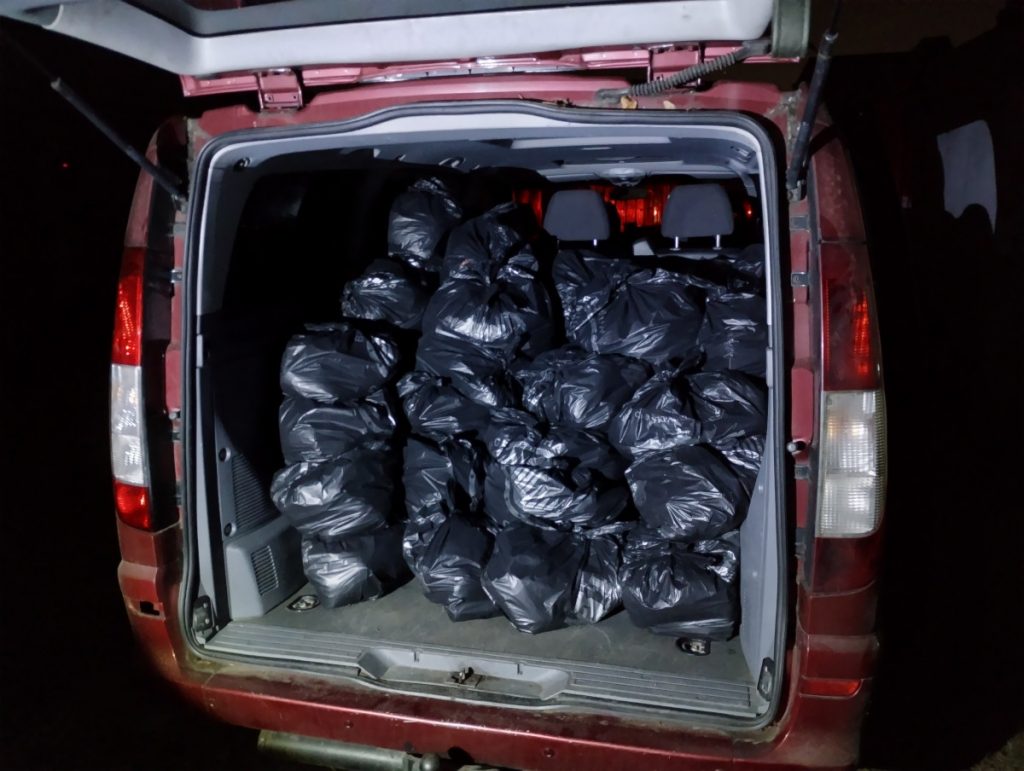
Second: finish and evacuate as quickly as possible. Our procedure said we must be out in 30 minutes. This rule was designed to protect both us and village residents. If a Russian surveillance drone saw the crowd gathered around our vehicle, it could lead to tragedy.
Third: collect photo evidence. Our usual cadence went like this: we would give about 10 bags to people, then pause and take a group photo. After that, give out 10 bags more, and take the next picture. Repeat until there’s nothing left.
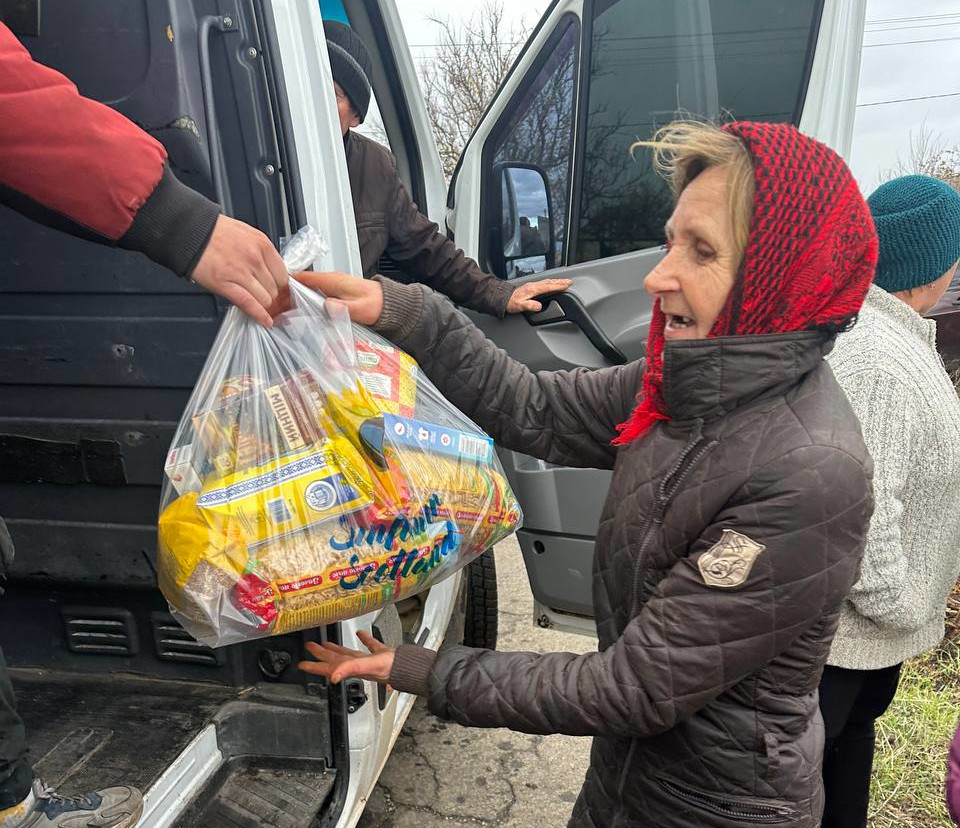
Photo reporting is a quick and efficient format. It’s easy to prove that our aid reached those who need it most: you can see them holding aid bags. And, we could quickly share these photos on social media, giving our donors the confidence they need to continue contributing to the effort.
Lesson 3. Buy food locally
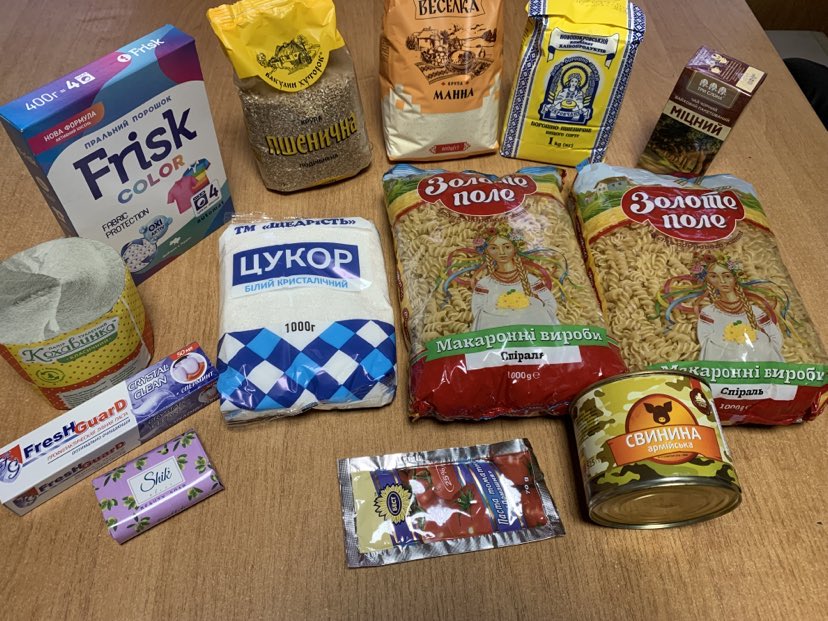
There are two reasons why I think every charity should buy supplies locally.
First, to support Ukraine’s economy and fight poverty. Second, it’s the better use of monetary donations. It cuts out the cost of logistics, and food itself costs about half in Ukraine as it does in Scotland.
Let me unpack these two ideas.
The first point: why should we support Ukraine’s economy and fight poverty? Seems obvious: for the long-term survival of the country and its people. We don’t want to create another failed state.
The economy is already very fragile: the country is at war. We were guilty ourselves when we sent free food from the UK, and thus removed food from the local market. We took business from Ukrainian producers, logistical companies and small shops.
In short, we were helping some people, while taking bread from the table of many others.
In our defence, in the beginning we didn’t know if there any food available in Ukraine at all. And if there was, could we get it? How would we transport it from the shops to those who need it?
That’s another reason why it was important for me to go to Ukraine myself, to work it all out.
It turns out that yes, there was plenty of food available: Ukraine is the 5th largest food producer in the world. Despite the on-going Russian missile raids, wholesale distributors were ready to sell food and get paid. The next step was distribution.
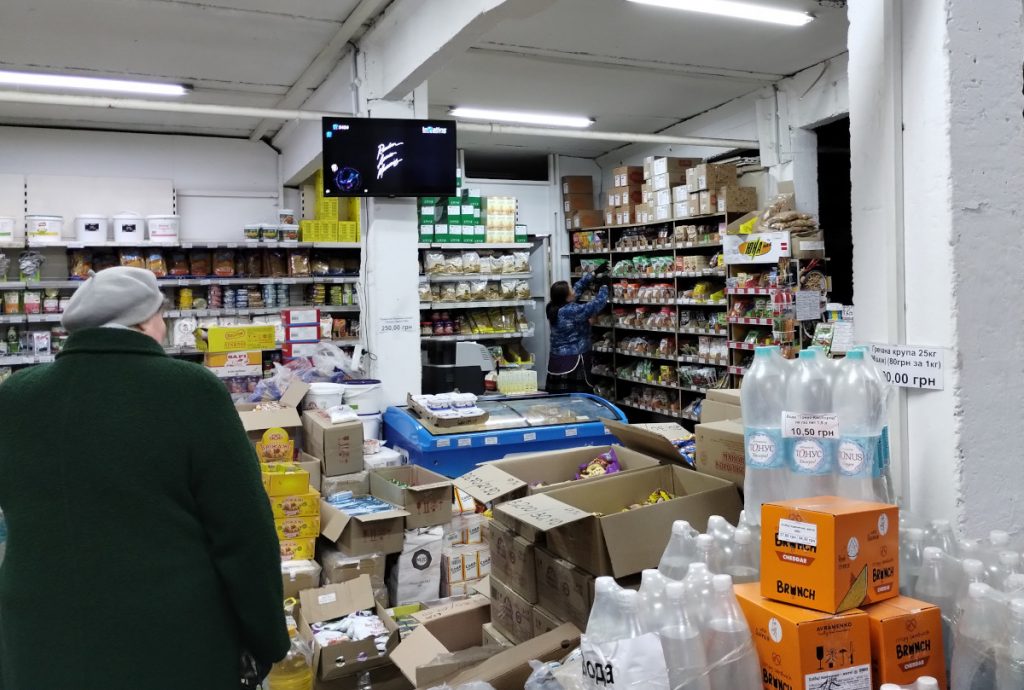
During July and August, we set up the whole process: from buying food in Ukraine, to distributing it to people.
I found local volunteers in Kharkiv. Their job was to go to the shops, pick up food, pack it into individual aid bags, and deliver them to frontline villages.
To pay for food, we used Revolut and Wise. Those apps work brilliantly, and allow us to send
£GBP to Ukrainian debit cards, or IBAN bank accounts.
In conclusion, it was absolutely possible to buy aid locally. Moreover, we were able to buy a whole range of other locally-produced items, not only food. For example cleaning and washing supplies, adult and children’s clothing, and footwear.
By supporting local businesses, we help the country long-term. We help them to pay taxes, sustain jobs, and fight poverty.
This is the right thing to do.
The second point is, by buying locally we could deliver much more aid and help many more families from each £1 donated to us. Food is about 30-50% cheaper in Ukraine than in the UK.
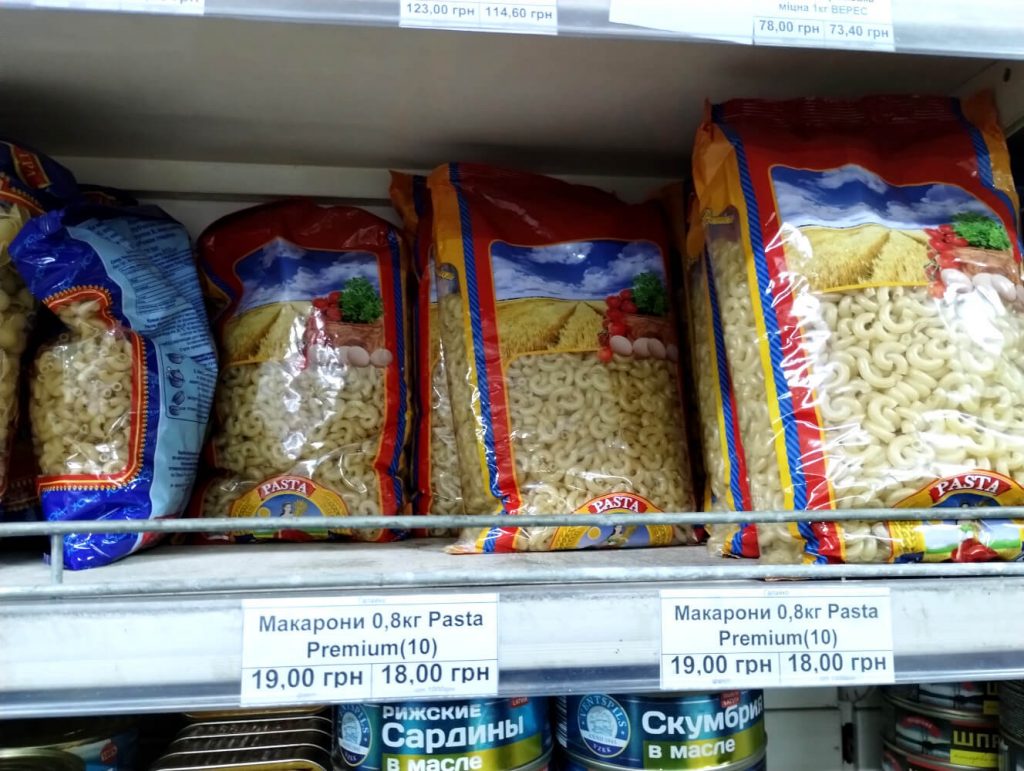
Another, very important point: lorry operators are profiteering. In the early days of the war, they charged £4,000 for a trip from Edinburgh to Dnipro. But soon they started raising prices, and by July you would be out of pocket by £8,000 for the same journey.
Over that time, fuel prices rose by 30% but they did not double.
Charities have to fundraise to cover the cost of international shipping. This cost is a waste, it’s not helping anyone.
A single bag loaded with food aid costs us £10 to buy (in Ukraine) and deliver. £8,000 is enough to help 800 families! It is insane to waste this money on transportation, when we can help so many people instead.
I heard that some charities only pay £4,000 per lorry, and the rest is paid by their donors. Still, this money could be used to help 400 families.
Lesson 4. Ukrainian volunteers: the unsung heroes
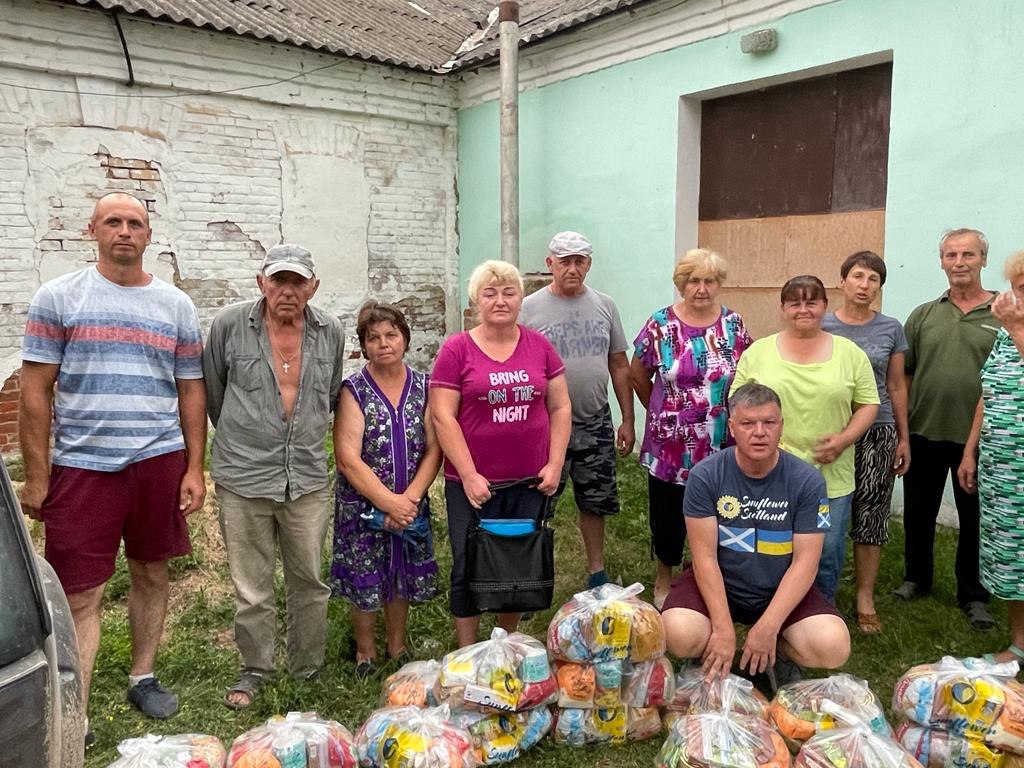
The success or failure of a humanitarian mission depends on the team. There is no queue of volunteers willing to risk their life – and quite possibly be injured or die – delivering packets of pasta to strangers.
This is what frontline volunteering is about.
Taking a huge personal risk, leaving one’s loved ones at home worrying and praying, while driving through ruined roads to god-forsaken villages, in order to give food to complete strangers.
At the beginning of the war, the Ukrainian nation united and rose to the challenge. Many men and women became humanitarian volunteers, rushing to help their compatriots. But 18 months in, most people returned to work, or fled to Europe. Only few remained.
Volunteers who carry on, no matter what, have a very big heart. But driving through shattered villages, meeting people who lost everything, seeing the pain, the suffering, day in and day out, leaves a mark on the human psyche.
All volunteers suffer from PTSD; from insomnia; from God know what mental disorders.
Some drop out when they can take no more.
Serhii, from Kharkiv, worked for us from July to October 2022. He did fantastic, selfless work. He took part in some of the most dangerous missions around Kharkiv, when it was encircled by the Russians. When Kupyansk was liberated, our Ukrainian team loaded a jeep and a trailer with food and went on a mission there. While they were in Kupyansk, the Russians opened fire. After a near-miss explosion, Serhii was shell shocked. Our volunteers got back, but this was it for Serhii. He was OK physically, but wouldn’t do frontline volunteering any longer.
Soldiers get medals. But there are no awards for volunteers.
They are the unsung heroes of this war. Their compassion and commitment saved thousands of innocent lives. Will their names be remembered?
Over time, our team in Ukraine changed because people burn out very quickly. Serhii quit.
Another person – I will not mention his name here – did brilliant job at first, but later disappeared with a sum of money.
Our main contact in an Odesa-based charity changed jobs.
Frontline volunteering is hard. Not many can do it for a long time, for all sorts of reasons.
We are now more experienced, and we developed new relationships which I hope will be much stronger. We now cooperate with a charity in Kryvyi Rih, and they deliver aid to the Kherson region. Vitalyi is our volunteer in Kharkiv. He delivers aid across Ukraine’s north-east.
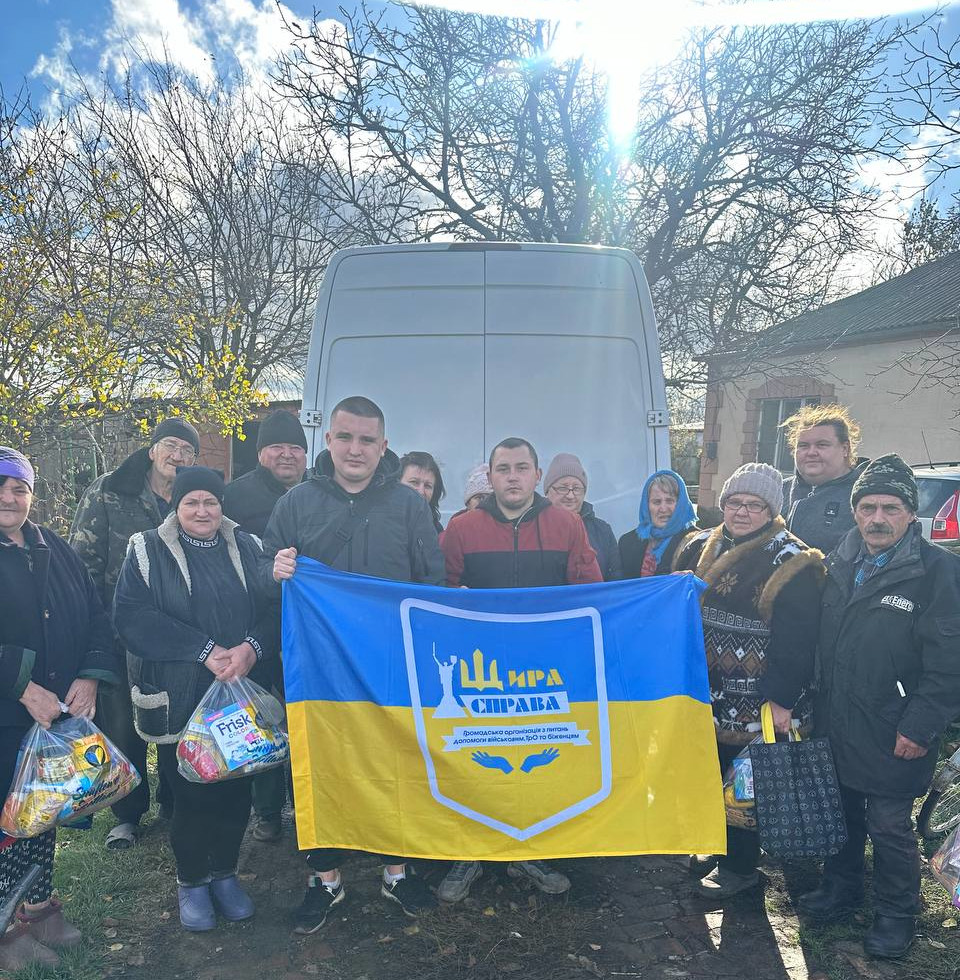
My first learning, and a recommendation is that more mature volunteers, who had family and children, add more value. They know from experience what type of food people like and don’t like, what type of washing powder or toothpaste to buy. Their feedback can be truly valuable. Younger volunteers have more energy, but they lack practical life skills.
My second learning was that it’s best to sign a simple contract with volunteers. Putting on paper what our charity wants was really helpful. We laid out our expectations in plain language: what kind of reporting we want, how to use our logo, how to claim expenses.
Of course, in frontline areas things don’t always work to plan. But in fairness, our volunteers get most things right most of the time.
Lesson 5. Frontline first aid training
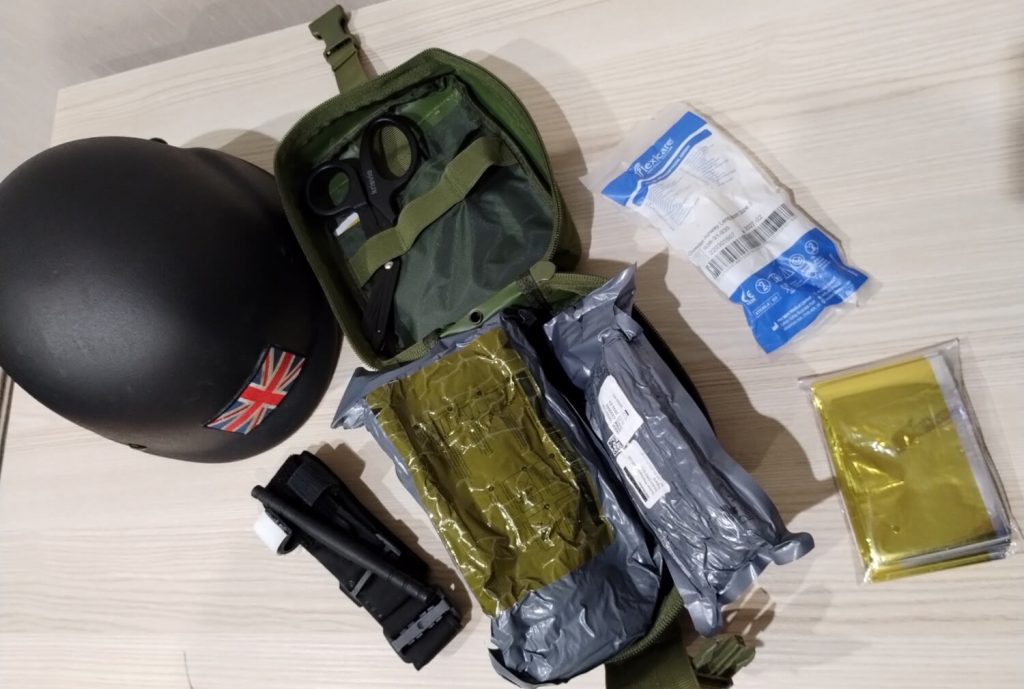
This is one of the greatest issues, if not the greatest.
In Ukraine, most volunteers don’t have any frontline first aid training. This type of training is very different from the typical civilian first aiding. For example. they don’t need to know CPR. The risk of food choking or stroke is negligible. The main focus should be on death from critical bleeding. It is the number one cause of preventable death
after injury is bleeding.
Someone with severe blood loss must be treated within one minute, or the person risks losing their life. That’s why in the army, soldiers’ main first aid device is tourniquet. This is a simple, life-saving bandage that does just that: stops bleeding.
While on mission, volunteers face the full scope of military risks (though not at the same degree as soldiers).
Typical risks include driving over a land mine, being hit by shrapnel from artillery shelling, or mortar fire, or missiles.
Or, they can be ambushed by a “DRG”: enemy special forces operating behind the frontline. In this case, they can sustain gunshot wounds.
The problem is, frontline volunteers are normal people. They have no idea what risks they take. Because of that, they get zero training.
Having participated in frontline missions more than ten times, I decided to learn and then train the Ukrainian team.
I was lucky to have met a British charity: Prehospital Care and Aid Worldwide (https://phcaw.org.uk/). Set up by the NHS paramedics Michael Bot and Adam Williamson in Ipswich, it teaches life-saving techniques both in the UK and around the world. I attended their training, and got certified as an International Medical First Responder.
They are absolutely brilliant, and I cannot recommend them enough.
With my certification, I teach the “Stop the bleed” course (https://phcaw.org.uk/stopthebleed), which was developed by the American College of Surgeons.
My special focus is on frontline first aid. For example, how to stop bleeding with tourniquets or with Israeli bandages.
How to identify the source of bleeding and ruthlessly cut clothes with shears.
How to use abdominal bandage.
How to use OP tubes and thermal blankets.
The objective is to stabilise someone as quickly as possible, and prepare them to be taken to hospital. I delivered this course to our volunteers in Kharkiv.
In addition, I assembled a few “Frontline volunteer first aid kits”, which I gave participants for free. The typical issue with most off-the shelf first-aid kits is that include too much useless stuff, such as cleaning wipes, eye wash or plasters. At the same time, they often don’t include the two things you need the most: tourniquet and shears.
My “Frontline volunteer first aid kits” only include what’s necessary to stop bleeding, and nothing else. In critical bleeding, there is not time to sanitise the wound. Having too much stuff is as bad as having too little.
Please contact me through our website https://sunflowerscotland.co.uk/contact/ for any further information, or the contents of the “Frontline volunteer first aid kit”.
My recommendation for any charity is to find a “tacmed” (tactical medicine) trainer where you operate. They can teach your local volunteers, or refresh their skills.
Although we all know that first aid is not to be neglected, we seem to do just that. It’s the kind of skill that gets forgotten about, until it’s too late.
Final words: thanks to all our donors
It has been an honour to work with everyone in our team at Sunflower Scotland.
Let me speak on behalf of our team that we are truly grateful to the people of Scotland. They supported our humanitarian work in Ukraine from the first days of the war. They kept donating, even when the heating bills bit most Scottish families last winter. The soaring rents and skyrocketing cost of living became too tough for many.
Still, they kept supporting Ukraine.
We, in turn, learned over time, and became more efficient. When we started buying in Ukraine, we could do more aid deliveries with less money.
I think that being innovative, careful with money and doing more with less is very much a Scottish thing. We are proud to be an extension of our community in Ukraine, bringing not only aid but also compassion and hope.
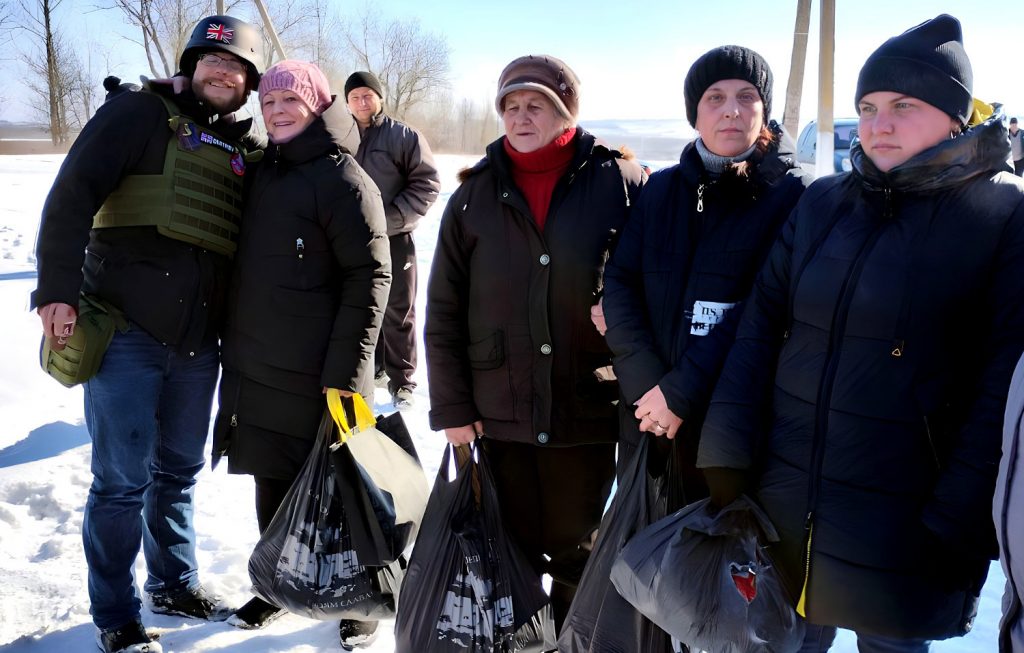
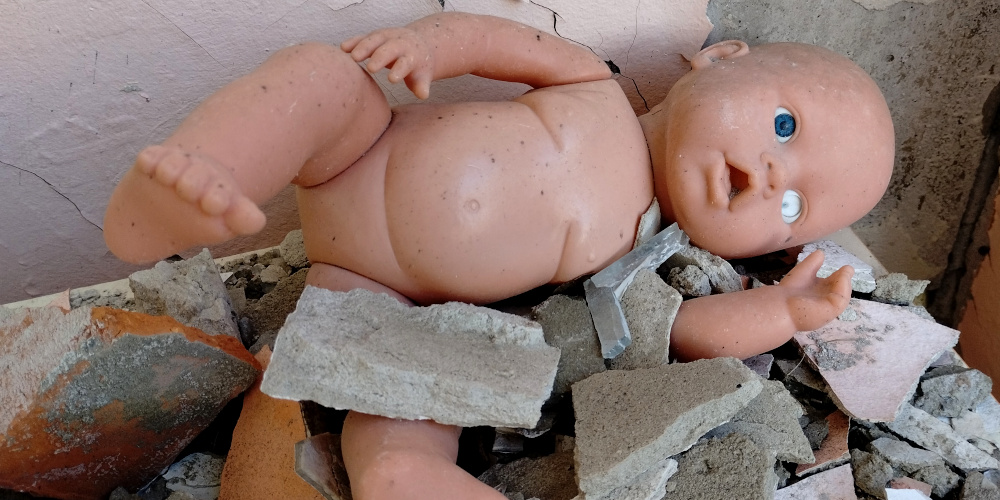
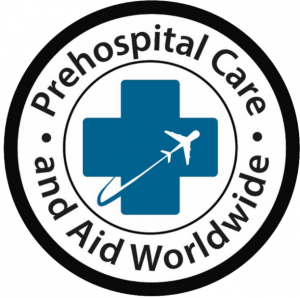
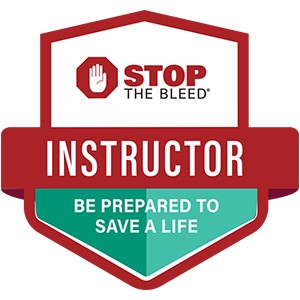
0 Comments for “Help to the eighth pit of hell: five lessons from Ukraine”